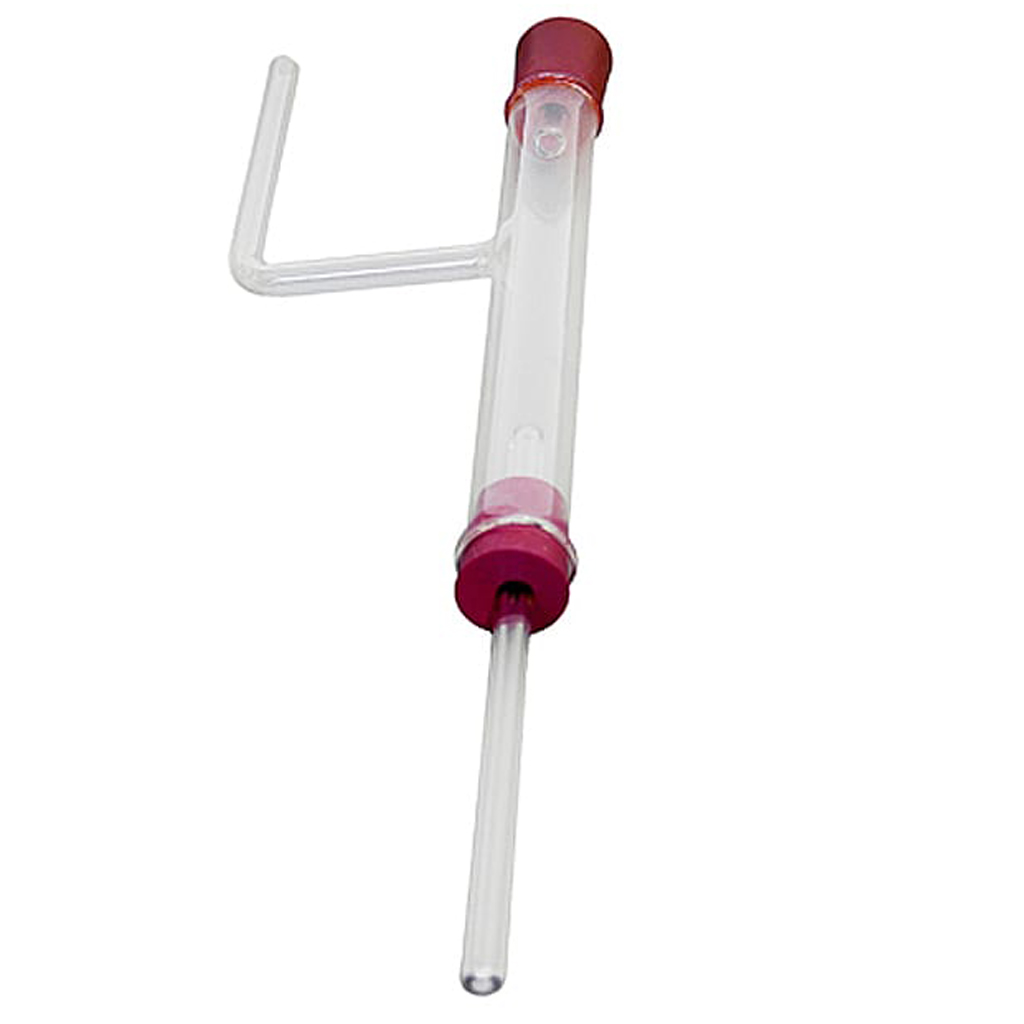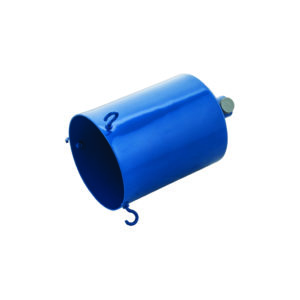POTOMETER: ‘H-Type’
Comprises a glass tube 160mm long x 20mm dia. with an 8mm dia. side-arm connected to a 140mm long piece of 1mm bore capillary tubing to form an ‘H’.
A cut shoot is attached to the top of the capillary tubing with a short piece of clear plastic tubing.
The large diameter glass tubing acts as the reservoir. This apparatus is designed for student use.




